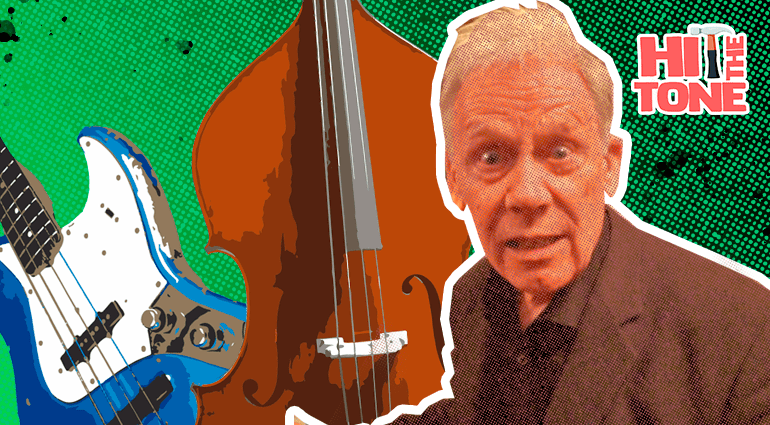
#HitTheTone
Are we still talking about Walk On The Wild Side?
Rivers of ink have flowed over what is considered to be one of the best albums in the history of popular music. Transformer (1972, RCA), Lou Reed‘s second solo album combines New York poetry with glam and the first hints of what, very few years later, would be called “punk“. Through the 11 songs, Reed dissects his environment and unfolds his brilliant universe of characters and urban anecdotes. Songs like Vicious, Perfect Day, Hangin’ Around, Satellite Of Love or Walk On The Wild Side have been in the collective memory for decades.
Yeah, yeah, tell me something I don’t know!
Everyone knows about the work Mick Ronson and David Bowie did in post-production and the participation of illustrious people such as Klaus Voormann, but perhaps there is a
lesser-known name: Herbie Flowers. Born in Isleworth in 1938, Flowers is an upright bassist, electric bassist and tuba player who has played with people of the calibre of Paul McCartney, Cat Stevens, DavidBowie and T. Rex. A great jazz lover – “I am, first and foremost, a double bass player,” he once said, and he noticed, since the late ’60s, that his talent and tremendous melodic capacity were in high demand by the rock ‘n’ roll industry. His bass lines can be recognised in hits such as Space Oddity, Rebel Rebel, Dandy In The Underworld, Perfect Day or the song that concerns us here: Walk On The Wild Side.
Let’s get down to the meat and potatoes: How did he get that tone?
Beyond Lou Reed’s impressive lyrical prowess on Wild Side, and his unmistakable voice that draws you in, one thing is clear: The axis of the song, what creates the atmosphere, is the bass line. Flowers tells it in astounding simplicity: “It was simple. I arrived and I played it, just one take. Years later, Lou said to me: It’s your fault that I’ve spent 20 years trying to get that melody out of my head.” It is clear that it is an element that changes the dynamics of the album. Although the studio was already used at the time of recording as a sound laboratory, Flowers, perhaps because of his origins in jazz, always opted for a pure sound, without retouching or effects. In a session that lasted, according to him, barely 20 minutes, Flowers recorded the line with the double bass. This first track provided the robust, deep, and hard sound characteristic of the song. Once the double bass was recorded, Flowers came up with the idea of developing the melody using a 10th. He recorded it with an electric bass and blended the tracks. The result of superimposing the 10th harmony of the melody with two different instruments was a thick, blunt and classic tone, but at the same time, very dynamic and full of nuances.
You are currently viewing a placeholder content from Youtube. To access the actual content, click the button below. Please note that doing so will share data with third-party providers.
OK, I’m not Herbie Flowers, but I wanna record a double bass. How?
Few instruments have as many peculiarities when it comes to recording as the double bass. Its complex and robust sound makes it a hard nut to crack. More than with the majority of instrumentalists, bassist usually are quite specific with the sound they want. A big part of the final result depends on the microphones used, on their characteristics and their placement. There are, however, some universally accepted tricks: in order to achieve a natural and defined sound, it is advisable to place the mics between 15 and 30 cm in front of the double bass’ bridge; if we find that the bass is too boomy, it is recommended that we place the mics a few centimetres from the F-holes;and to achieve a compact sound, without feedback, it is recommended to wrap the microphone in foam (except for the capsule, of course) and place it behind the bridge or between the strings and the body.
Okay, now let’s talk gear: One of the most commonly used microphones for recording
double basses is the Audio-Technica AT4080, a versatile condenser microphone with a Figure Eight polar pattern. To take advantage of its full capacity, it is recommended to place it at the height of the F-hole of the double bass, slightly tilted towards the strings, to capture their details.
Check out a video review of this wonderful mic by a real expert:
You are currently viewing a placeholder content from Youtube. To access the actual content, click the button below. Please note that doing so will share data with third-party providers.
OK! Are there any alternatives?
For sure, a great alternative to the AT4080 is the Coles 4038 Studio Ribbon. This is a perfect microphone for recording instruments but also very valuable for recording the voice. As in the AT4080, the Figure Eight polar pattern provides a very clear and balanced response.
- Coles 4038 Studio Ribbon
When it comes to mic’ing double bass, the saying is usually true that what you need is a clean, clear and balanced response. But does this always require you to shell out close to 1000 euros? No! There are several options, between 300 and 800€:
Golden Age Project R1 Tube active
And what if I wanna take it to the stage?
The main stumbling block may be the low volume of the double bass as opposed to other amplified instruments on stage. To overcome this problem, it is recommended to use clip-on microphones and place them on the bridge. In particular, it is advisable to anchor them on one side of the bridge, pointing, as in the previous case, at the F-hole, at a distance of about 5 cm. The Audio-
Technica ATM350U is perhaps the best choice, due to its robustness and its ability to pick up a bright and balanced sound. Its price is 339€. Another, more expensive option, is the DPA d:vote Core 4099 Bass, a device specialized in recording the specific frequencies of the double bass. There are also options to avoid this stumbling block at a cheaper price, for example the t.bone models: the Ovid System CC 100 RC TQG for 58€ and the Ovid System CC 100 for only 48€.
- ATM350U
- DPA d:vote Core 4099 Bass
- the t.bone Ovid System CC 100 RC TQG
- the t.bone Ovid System CC 100
Back to Herbie Flowers, what about the electric bass?
As we said at the beginning, Herbie Flowers has always claimed to be first and foremost a double bass jazz player. However, in the song that concerns us, he also demonstrated a great mastery of the electric bass. First of all it is important to remember what is required in terms of DI or Direct Injection boxes. In this article (All About Direct Boxes) it is crystal clear. Secondly, and going back to the specific case of Flowers, he always had a great love: the Fender Jazz bass. He claims that his model is a 1959 prototype model that was never marketed and is therefore treated, unquestionably, like a jewel.
Now, now: we don’t all have that kind of money in our pockets. Luckily, economic brands like Harley Benton, Squier or Marcus Miller offer very nice alternatives at affordable prices:
- Harley Benton
- Squier
- Marcus Miller
Here is a perfect video example of Herbie Flowers mastering his Fender Jazz bass…
You are currently viewing a placeholder content from Youtube. To access the actual content, click the button below. Please note that doing so will share data with third-party providers.
Conclusion
The recording story of the bass line of Walk On The Wild Side leaves us with several lessons learned. We can learn from Herbie Flowers’ reluctance to use effects and opting for a raw, natural sound. The ease with which he recorded one of the most important melodies of the last century goes to show that, before getting lost in technical twists and turns, the transmission of the idea is what makes the effort worthwhile. Transmitting this idea properly from instrument to microphone to soundboard is equally as important, especially for a peculiar instrument like the double bass. Every centimetre makes a difference in capturing its nuances properly. These are the things which can make the difference between what is acceptable and what is excellent. ✨
One comment
Leave a Reply
You are currently viewing a placeholder content from Facebook. To access the actual content, click the button below. Please note that doing so will share data with third-party providers.
More InformationYou are currently viewing a placeholder content from Instagram. To access the actual content, click the button below. Please note that doing so will share data with third-party providers.
More InformationYou are currently viewing a placeholder content from X. To access the actual content, click the button below. Please note that doing so will share data with third-party providers.
More Information














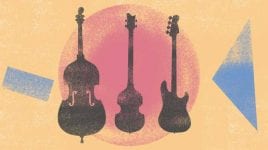

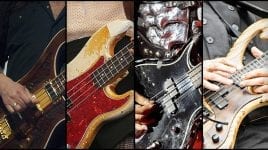
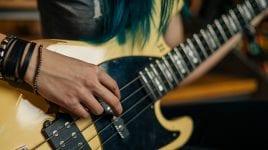

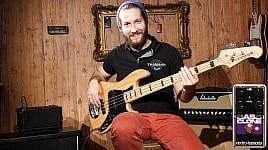
Steve S. says:
An important part of Herbie Flowers electric bass tone in his early days and often overlooked is his use of a Wallace amp,it had very distinctive deep lows but also warm highs and not much mid range,it also compressed naturally,lovely tone!